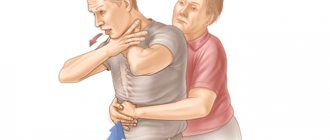Pneumonia itself is a serious disease, and if we are talking about small children, the situation can be critical. Congenital pneumonia in newborns is not so rare, and this is due to the fact that during pregnancy the expectant mother suffers an infectious disease. This subsequently affects the child, and the disease progresses in the first three days.
When a baby is born, the symptoms are immediately visible, and the painful condition is accompanied by asphyxia, which occurs during childbirth, and the fact that the child is premature.
Breasts are a special category of patients, since their defenselessness and vulnerability to severe infection is obvious. The physiological characteristics of the baby contribute to the fact that the risk of getting sick increases significantly. The narrow passages in the bronchi and larynx do not allow us to say that a baby can fight for life just like an adult. The mucous membrane in babies is prone to swelling, and removing sputum from the lungs is quite a difficult task. All systems have not yet been launched; they are not capable of functioning fully. The lungs are more filled with blood than in adults, less elastic and therefore vulnerable.
Despite the fact that inflammation can occur in a baby outside the hospital, most often, the most severe cases occur when infected in the womb. It may also be the consequences of previous diseases, such as ARVI, whooping cough, measles.
With congenital pathology, the risk that the disease will be more severe than usual is quite high.
Congenital pneumonia - definition of the disease
Congenital pneumonia is an acute infectious and inflammatory disease of the lungs that manifests itself in the first 72 hours of life.
According to statistics, congenital pneumonia occurs in 2% of full-term newborns. Among premature infants, this figure reaches 15%. Just a few years ago, this disease often resulted in death, but today, thanks to the achievements of modern medicine, congenital pneumonia in most cases has a favorable prognosis.
Prevention
Prevention of pneumonia in newborns is a set of measures that need to be taken even before conceiving a child. The list of preventive measures for pathology includes:
- full medical examination before a planned pregnancy;
- carrying out all necessary blood tests during pregnancy;
- if possible, choose a natural birth rather than a caesarean section;
- give preference to breastfeeding rather than using formula feeding;
- Avoid crowded places during epidemics.
A healthy lifestyle during pregnancy and proper care of the newborn significantly reduces the risk of pathology.
Causes
Pneumonia is an infectious disease that has no age restrictions. Pneumonia affects children, adults, and the elderly. Babies who have just been born are also susceptible to it.
The causative agents of congenital pneumonia are pathogenic microorganisms: viruses, bacteria, fungi. Infection of a newborn can occur in two ways.
- Hematogenous or transplacental route. In this case, pathogens penetrate the fetus during pregnancy through the mother’s blood. The cause is infectious diseases of the pregnant woman. Intrauterine infection is caused by measles, rubella, herpes simplex, and toxoplasma viruses. In addition to pneumonia, newborns often develop a generalized infectious process affecting other organs (liver, kidneys, nervous system).
- Bronchogenic or intrapartum route. Infection occurs during the birth process through the baby's respiratory tract. The cause may be inflammatory diseases of the mother's genitourinary system (vulvovaginitis, endometritis, cystitis), a long anhydrous period. Congenital pneumonia during childbirth is caused by streptococci, staphylococci, pneumococci, trichomonas, Escherichia coli, and mycoplasma.
Read about the features of chlamydial pneumonia in children.
During intrauterine development and in the first months of life, the baby’s immune system is at the stage of formation and improvement. In this regard, newborns cannot actively fight back against pathogenic agents. The pathogen, having penetrated into the lungs through the blood or respiratory tract, causes an inflammatory process (most often bilateral). Tissue swelling occurs, as a result of which the lungs are unable to properly perform their function. The body of newborns suffers from oxygen deficiency, excess carbon dioxide, and metabolic disorders.
The risk of developing an inflammatory process depends on various factors. The most defenseless against infection are children who were born before their due date, who are in asphyxia, or who have suffered aspiration syndrome (swallowing of meconium, amniotic fluid). Any infectious disease in a pregnant woman greatly increases the risk of infection in newborns.
Determining the exact cause of congenital pneumonia is necessary to develop care and treatment tactics and predict possible consequences.
Mycoplasma pneumonia is one of the most common types of disease among children.
Types of disease
Pneumonia is classified according to several criteria. Depending on the pathogen, the disease in young children can be:
- Viral. In infants it is most often caused by cytomegalovirus or herpes virus.
- Gribkov. Caused by the fungus Candida.
- Bacterial. Pneumococci, staphylococci, pneumococci and other pathogenic bacterial flora always require treatment with antibiotics.
The degree of damage to lung tissue during pneumonia can also vary:
- Focal - small areas of the lungs are affected.
- Total inflammation. Involves damage to one entire lung.
- Bilateral pneumonia in a newborn. Occurs more often than in patients of other ages. A newborn's lungs are small, so inflammation quickly spreads on both sides of the lung tissue.
There are different routes of infection:
- Intrauterine develops during a woman’s pregnancy.
- Aspiration usually occurs when amniotic fluid enters the respiratory tract.
- When passing through an infected birth canal, children can also become infected.
- Acquired pneumonia is an inflammation of the lungs caused by the entry of pathogenic microflora by airborne droplets.
Determining the type of disease allows you to choose the right treatment.
Symptoms
Symptoms of congenital pneumonia in newborns depend on when and how the infection occurred. The causative agents of the disease also make some differences in the clinical picture.
Signs of hematogenous infection
With transplacental infection of the fetus, pathological signs are observed in the first minutes after birth. The child has symptoms of pneumonia such as:
- Asphyxia, which often requires resuscitation;
- Very weak or absent cry;
- Paleness of the skin;
- Blueness of the fingertips, periorbital zone;
- Weak, shallow, arrhythmic breathing;
- Muscular hypotonia;
- Decreased physiological reflexes;
- Underweight;
- High temperature (from 38 º C).
With intrauterine infection, symptoms of damage to other systems and delayed fetal development are often present. In many cases, the central nervous system suffers, which is manifested by lethargy or agitation of the child, pathological reflexes, and retardation in physical and psychological development. In severe cases, convulsions are observed, especially against the background of high body temperature.
Pathology of the cardiovascular system is manifested by rapid heartbeat, arrhythmia, and swelling of the extremities.
Children with congenital pneumonia have poor appetite. They do not have enough strength to suckle, they often spit up (vomiting is possible), and lose weight.
Pediatricians sometimes mistake such disorders of the digestive system for an intestinal infection, missing precious time to treat pneumonia.
Signs of bronchogenic inflammation
You can distinguish congenital pneumonia, which the baby became infected with during birth, by the timing of the appearance of the first pathological symptoms.
At first, the newborn’s condition does not cause concern, but after a few days a slight increase in temperature is observed, the child becomes restless, sleeps poorly, cries and refuses to eat. Possible signs of acute respiratory infections: runny nose, redness of the sclera, slight cough. Gradually, these signs increase: body temperature rises to high levels (from 38 to 40 º C), cough intensifies. Respiratory failure develops, the symptoms of which are:
- Rapid shallow arrhythmic breathing;
- Participation of the chest in the act of breathing;
- Flaring of the wings of the nose;
- Blue discoloration of the phalanges of the fingers;
- Accelerated heartbeat.
In full-term newborns, intrapartum pneumonia develops within a week; in premature babies, the peak of the disease can occur as early as the second or third day.
Diagnostics
Listening to the lungs
Only a doctor can determine this disease. By examining and palpating the chest and listening to noises, the doctor can identify the etiology of the disease. To detect pneumonia, other signs are also diagnosed: respiratory rate, respiratory failure (shortness of breath, participation of auxiliary muscles in breathing). To make an accurate diagnosis, the doctor often recommends taking an x-ray. An X-ray image will tell you about the pathogenesis of the disease.
Which doctor should I contact?
Having discovered the first signs of pneumonia, you must immediately call a pediatrician. In addition to the pediatrician, the child should be examined by an otolaryngologist and pulmonologist.
What tests need to be taken
There are times when it is difficult to identify the cause of the disease using x-rays. Therefore, the doctor additionally prescribes tests for the causative agent of the disease and for the isolation of antibodies to the pathogen. A mandatory test is sputum examination. It may contain several potential infections. A clinical blood test will help identify the disease, which will reveal a low level of hemoglobin, leukocytosis, neutrophilia and an increase in ESR (20 mm/h or more).
Possible complications and consequences
In the absence of adequate and timely treatment of congenital pneumonia, dangerous consequences are possible, such as:
- Severe respiratory distress;
- Pulmonary edema;
- Cardiac dysfunction;
- Multiple organ failure.
Accurate diagnosis and early and correct therapy give positive results. If the diagnosis is made incorrectly and incorrect treatment is started, the following complications are possible:
- Respiratory failure. It is characterized by dangerously low levels of oxygen in the blood or an excess of carbon dioxide.
- Cardiovascular failure. It manifests itself as a disturbance in the functioning of the heart.
- The emergence of toxic syndrome. May be accompanied by loose stools, regurgitation, frequent continuous vomiting, and elevated body temperature.
- Bronchopulmonary dysplasia, which affects the small bronchi and lung tissue.
The acute period of congenital pneumonia lasts about 2 weeks. Another 1-2 weeks are spent restoring the structure of the lung tissue.
Treatment is stopped only after the disappearance of symptoms, normalization of the sick baby’s well-being, and repeated x-ray and laboratory tests.
Premature babies have a very high risk of death. An unfavorable prognosis also remains for infants with a congenital disorder of the immune system - primary immunodeficiency. To save the life of a newborn, doctors sometimes resort to surgery.
Premature and after Caesarean
Premature and Caesarean babies are much more susceptible to various types of infections, including pneumonia pathogens. The symptoms are somewhat different. If in premature babies they are often similar to standard ones, then in those born after cesarean they are slightly different:
- the skin acquires an earthy tone;
- movement of the wings of the nose during breathing;
- frequent crying;
- labored breathing.
The course of treatment itself has only minor differences. You can read about them in other articles: pneumonia after Caesarean, pneumonia in premature babies.
Treatment
Treatment of congenital pneumonia is carried out exclusively in a hospital setting, adhering to all medical prescriptions, without the use of any alternative medicine. Only in this case is a favorable prognosis possible.
How to treat with medication
In a hospital setting, complex treatment is carried out in several directions:
- Eliminating the cause. Medicines are used depending on the type of pathogen. As a rule, the baby is given antibiotics (in the form of injections), as well as antiviral and antifungal drugs.
- Improved oxygenation. Oxygen inhalation, ATP and Cocarboxylase injections are used.
- Vitamin therapy is carried out, and drugs are also used to normalize intestinal microflora (lacto and bifidobacteria).
- Measures are taken to combat intoxication (intravenous infusions of glucose and saline solutions).
- Treatment of disorders of other organs and systems is carried out.
After the temperature normalizes, local reflexology is started. Particularly effective is chest massage, which prevents the development of congestion and stimulates the removal of mucus.
Proper care of sick newborns is an important addition to drug treatment of pneumonia. Mom needs to follow a number of recommendations:
- A baby weakened by illness cannot nurse for a long time, so he should be put to the breast as often as possible.
- The baby should not be swaddled tightly (squeezing the chest aggravates respiratory problems).
- In order to prevent sputum from stagnating, the baby needs to change his body position every half hour (to do this, he is turned over in the crib from side to side).
Treatment with folk remedies in premature newborns
Treatment with folk remedies can only be used by the mother. Prescribing any herbs or infusions to a child is strictly contraindicated.
If the mother has any infection, then folk remedies can be used in combination with medications.
Medicinal herbs are highly effective in treating infections that can cause pneumonia in a child. To prepare medicinal tea, you should take 25 g of mint, 50 g of licorice and the same amount of wild rosemary leaves. The herb collection should be simmered over low heat for 5-10 minutes and then strained. You need to drink this tea 3 times a day, half a cup.
A decoction of herbs such as marshmallow, cinquefoil, and rose hips is especially effective against cytomegalovirus infection. You need to make tea at the rate of 1 spoon of the mixture per 1 liter of water and drink in small sips throughout the day. The course of treatment is 4 weeks.
Tea made from chamomile leaves, oak bark and anise bark has an antiviral and antibacterial effect. To prepare it, all ingredients need to be poured with water and boiled (the proportions are the same as in the previous recipe). You need to take half a shot in the morning and evening.
What you need to know about pneumonia
It is worth considering that children during the newborn period are especially susceptible to various viruses and bacteria. Signs of pneumonia may differ depending on when the infection occurred (prenatal period, childbirth, neonatal period). Cases of intrauterine pneumonia cannot be called rare. In such a case, signs will be noticeable immediately after birth. Among the main factors provoking inflammation of the lung tissue, the first place is taken by the acute respiratory infections suffered by a pregnant woman during gestation (gestation).
However, not every cold leads to the formation of intrauterine pneumonia, so do not panic. But you shouldn’t let the course of the disease take its course.
Among the causative agents of pneumonia in children, the most common are staphylococci and streptococci. It should be taken into account that, based on anatomical features, the lungs of a child born prematurely are less developed, and accordingly, he is more susceptible to the occurrence of this disease.
Among the main predisposing factors that provoke pneumonia, it is worth pointing out:
- severe or chronic illnesses of the mother that appeared during pregnancy;
- reduced immunity;
- anemia;
- the presence of foci of infection in the pregnant woman’s body, etc.
It should be remembered that pneumonia is extremely dangerous for children. Hospitalization is mandatory. Carrying out treatment on an outpatient basis is dangerous; a small patient, together with his mother, must be under constant supervision of specialists.
Prevention of intrauterine pneumonia in children
Prevention of pneumonia in newborns begins during pregnancy planning. Expectant parents should be fully examined and promptly treated for all pathological conditions that pose a threat to the healthy development of the fetus.
While carrying a child, a woman needs to monitor her health and eliminate infectious and inflammatory diseases in a timely manner.
The risk of developing pneumonia in full-term babies is much lower, so an important point in its prevention is the prevention of premature birth. During delivery, situations leading to fetal asphyxia should be avoided.
Bronchial asthma in children
What pain in the middle of the chest indicates if there is a suspicion of pneumonia is described in this article.
Bronchial asthma - symptoms and treatment //drlor.online/zabolevaniya/gortani-glotki-bronxov/astma/prichiny-simptomy-vozmozhnoe-lechenie.html
Risk factors
The following factors significantly increase pneumonia in newborns:
| During pregnancy |
|
| During delivery |
|
| Internal factors |
|
| External factors |
|











